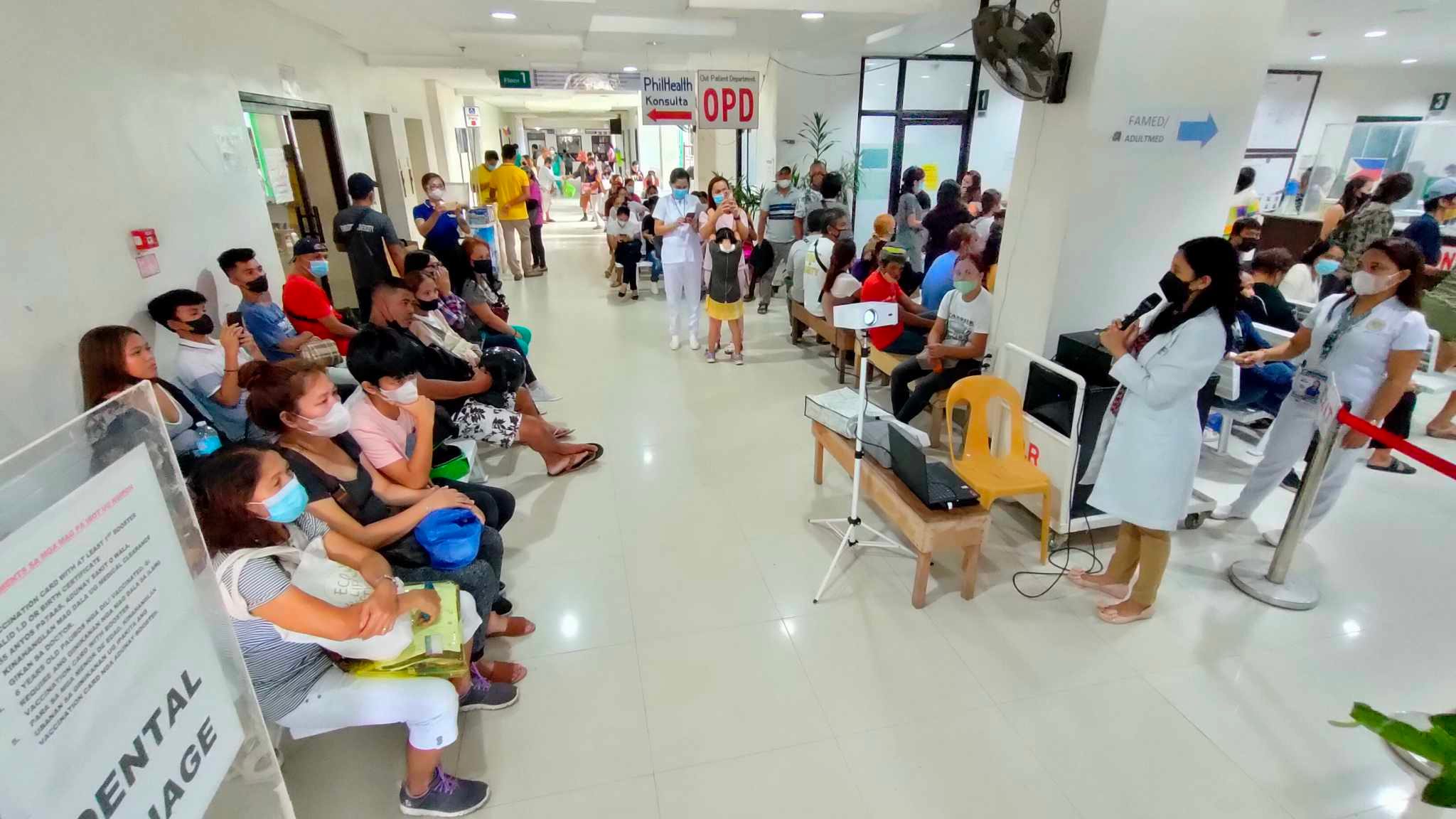SUMMARY
This is AI generated summarization, which may have errors. For context, always refer to the full article.

CAGAYAN DE ORO, Philippines – A city government-owned hospital in Cagayan de Oro has been operating beyond its 175-bed capacity due to an influx of patients long before the Christmas season.
The Justiniano R. Borja General Hospital (JRBGH) secured its accreditation as a Level-II health facility from the state’s health agency in August 2023.
Dr. Ferdinand Miranda, acting chief of JRBGH, said in a recent forum that they have been providing medical and health services to over 400 inpatients and 600 outpatients daily since last year.
“Being a public hospital, we do not refuse admission to patients,” Miranda said.
However, he said, there were instances when patients had to be referred to the Department of Health’s more equipped Northern Mindanao Medical Center (NMMC), a Level-III hospital in the city.
Miranda explained that a Level-II hospital should be manned by at least 500 medical personnel, but they only have 365.
They have recently posted notices of vacancies on JRBGH’s social media official accounts.
“Our nurses and doctors come and go. Once there are opportunities, they leave,” said Miranda.
Despite challenges, some healthcare professionals in the JRBGH have chosen to stay and have been in public health services for 10 to 20 years, according to Miranda.
Budget increase
The JRBGH has an annual budget of P775.503 million this year, reflecting a 12.15% increase over its P691.511 million budget in 2023.
The budget increase granted to JRBGH by the City Council this year is 21.74 percentage points lower than the increment given in 2023 compared to 2022’s budget of P516.482 million.
Earlier, Councilor Maria Lourdes Gaane, chairperson of the City Council’s health and sanitation committee, said that the approval of JRBGH’s budget was smooth sailing because they were aware of the situation.
JRBGH submitted its proposed budget earlier than the October 15, 2023 deadline set by the City Budget Office.
Gaane said the proposed upgrading projects and the allocation for salaries of newly hired and existing personnel were included in the P775.50-million budget of JRBGH this year.
Overstretch
In July 2023, JRBGH’s Health Analytics Section reported that the city-owned hospital was operating at 237% over its 100-bed capacity, as an accredited Level-II hospital then. It had 1,310 inpatients and 886 outpatients from the city and nearby localities in the Northern Mindanao region.
Due to the surge of patients, JRBGH ran out of Philippine National Drug Formulary (PNDF) medicines and laboratory reagents in October last year.
Gaane suggested to the JRBGH management to pay only for medicines given to patients, under consignment arrangements, particularly the fast-moving ones, to avoid wastage and save on costs.
To address the congestion problem in the ER area, Miranda said a 150-bed ER building has been planned, with funding already appropriated in the JRBGH 2024 annual budget. The project is awaiting the green light from the DOH in Northern Mindanao.
Miranda said they have extended medical consultation services for outpatients from six hours to 14 hours with more health personnel, particularly medical specialists, upon Mayor Rolando Uy’s approval.
“In the past, the cut-off for OPD (Outpatient Department) services ended at 2 pm; the rest of the afternoon was for recording. Now, OPD is open until 10 pm,” Miranda said, prompted by an influx of patients to over 600 from an average of 100 a day before the COVID-19 pandemic.
Another step to cut down crowding inside the JRBGH is a one-patient-one-watcher policy.
Also, personnel from Malasakit Center, Medical Assistance to Indigent Patients (MAIP), and Philippine Health Insurance Corporation (PhilHealth) desks have been collecting information from patients, thus eliminating queues.
Hopeful
Miranda expressed hope that once the city-wide health system under the Universal Health Care is in place with three of the city government’s JRBGH-attached health facilities fully operational, overwhelming hospitals would be prevented.
For the JRBGH, plans include establishing annex hospitals in barangays Lumbia and Tablon as well as the House of Hope custodial facility.
At present, the City Hospital-Lumbia is operating as an infirmary; the City Hospital-Tablon has to resolve road-of-way issues for its electricity and water connections; and an agreement was made between the city government and the local Catholic archdiocese for the House of Hope facility for psychiatric patients.
Gaane said the existing seven village-based Konsultasyong Sulit and Tama Centers, accredited by the PhilHealth, should be equipped with laboratory and provided medicine supplies. She said these must provide preventive care and support services without the need for admissions. – Rappler.com
Add a comment
How does this make you feel?










There are no comments yet. Add your comment to start the conversation.